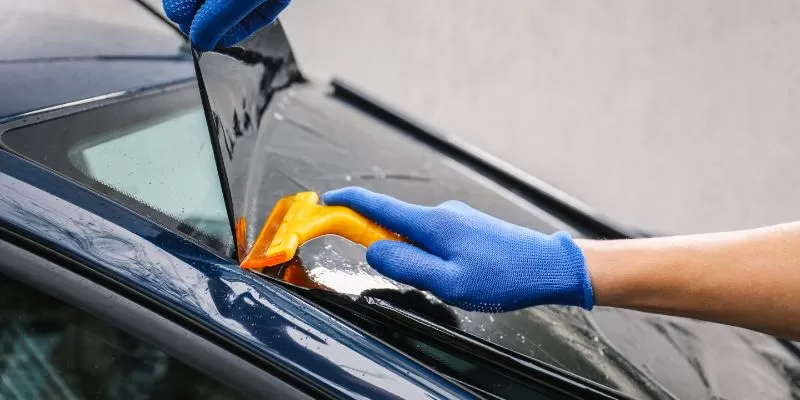Automobile Window Tinting: Durable Protection for Your Automobile's Windows
Automobile Window Tinting: Durable Protection for Your Automobile's Windows
Blog Article
Home Window Tinting Regulations and Standards: What You Required to Know Before Tinting Your Auto
Prior to waging window tinting for your car, it is important to familiarize on your own with the varied legislations and standards that govern this technique throughout different states. These laws determine the acceptable levels of color darkness, commonly determined by noticeable light transmission (VLT) portions, and consist of details stipulations for front windshields aimed at guaranteeing roadway security. Additionally, certain jurisdictions might use clinical exemptions for people with certifying conditions. Comprehending these intricacies can save you from prospective legal ramifications, but what are the certain policies in your state?
Overview of Home Window Tinting Laws
Home window tinting legislations are frequently based on variant throughout various jurisdictions, mirroring regional laws and security considerations. These legislations determine the acceptable degrees of tint darkness and reflectiveness on automobile windows, making sure that vehicle drivers maintain ample visibility while additionally safeguarding versus hazardous UV rays and warm.
The majority of guidelines classify window tinting based on the Visible Light Transmission (VLT) percent, which indicates the amount of light that can go through the home window. Usually, reduced VLT percentages represent darker tints. Legislations often separate between the front, side, and rear home windows, with more stringent constraints applied to the front windscreen to boost safety for both the motorist and other road users.
Furthermore, some jurisdictions impose constraints on the reflectivity of the tint, stopping extreme glow that might hinder exposure. Exceptions to these legislations might exist for people with details medical problems needing added sunlight protection. Compliance with window tinting policies is crucial, as infractions can cause penalties, mandatory removal of the tint, and prospective rises in insurance premiums. It is crucial for car proprietors to acquaint themselves with neighborhood legislations before proceeding with home window tinting setups.
State-by-State Tint Regulations
Recognizing the specific window tinting policies in each state is crucial for vehicle proprietors looking for to abide with the regulation. Each state in the U.S. has actually developed its very own set of rules regulating home window tinting, which can differ significantly. These guidelines usually dictate the allowable levels of tint darkness, the types of home windows that can be tinted, and any type of medical exceptions that might use.
For instance, states like The golden state have rigorous limitations on color darkness for front home windows, while others, such as New Mexico, may allow darker tints. Additionally, specific states mandate details exposure portions for various windows, consisting of the windscreen, front side home windows, and rear home windows. It is important for vehicle proprietors to acquaint themselves with their state's regulations to avoid prospective penalties or penalties.
In addition, some states may call for a qualification sticker label to be placed on tinted windows, suggesting compliance with state regulations. Failure to follow these laws not only risks lawful effects yet can also influence safety and presence while driving. Car owners ought to conduct comprehensive research study or speak with local authorities to make certain complete understanding and compliance with state-by-state color guidelines.
Allowed Color Levels and Kinds
Numerous vehicle owners may be stunned to find out that enabled tint degrees and types differ commonly throughout different states. Each state has established its own laws relating to the allowable darkness and reflectivity of home window color, commonly determined by Visible Light Transmission (VLT) portions. VLT describes the quantity of light that can go through the tinted home windows; therefore, a reduced portion shows a darker color.

Additionally, the types of tint products allowed can visit this website differ, with some states restricting mirror-like or metal coatings. It is essential for lorry proprietors to acquaint themselves with their state's details laws to guarantee conformity. Non-compliance can lead to fines, obligatory removal of the tint, or other legal consequences, making it imperative to understand these laws prior to continuing with installment.
Medical Exemptions for Tinting
While not all states give allowances for clinical exceptions concerning window tinting, those that do recognize the necessity for certain people to improve exposure and comfort because of medical conditions. Various medical problems, such as lupus, skin cancer, and particular eye problems, can make individuals especially sensitive to sunlight. As a result, these individuals may call for darker tints to safeguard themselves from harmful UV rays and glare.
It is necessary to keep in mind that despite a clinical exemption, there might still be constraints on the degree of tint enabled. Compliance with state regulations guarantees that individuals are both safeguarded and within legal limits. Those taking into consideration medical exemptions should call their local Division of Motor Automobiles or equivalent authority to understand the procedures and needs essential to look for an exception successfully.
Fines for Non-Compliance
Failing to adhere to home window tinting regulations can result in considerable fines, which differ by state. Law enforcement companies are equipped to provide citations for automobiles that do not follow the specified tinting guidelines. These fines generally consist of penalties, which can vary from modest total up to a number of hundred dollars, depending on the extent of the infraction and the state in inquiry.
In some jurisdictions, duplicated offenses might result visit homepage in escalating penalties or additional penalties, such as necessary court appearances. Non-compliance might require the elimination of unlawful tinting, usually at the owner's cost. In extreme situations, habitual culprits may face suspension of their automobile enrollment until conformity is accomplished.
Additionally, insurance implications might emerge from receiving several citations for window tint violations. Insurance firms might view such offenses as an indication of riskier habits, potentially causing raised costs or difficulty in insurance coverage.
To avoid these charges, it is critical for lorry owners to familiarize themselves with their neighborhood home window tinting laws and guarantee that their vehicle complies (Window Tinting). This aggressive technique not only avoids lawful ramifications yet additionally promotes roadway safety
Conclusion

Most regulations classify home window tinting based on the Visible Light Transmission (VLT) portion, which shows the quantity of light that can pass with the window. Conformity with window tinting regulations is essential, as infractions can result in penalties, obligatory removal of the tint, and prospective boosts in insurance coverage premiums.Comprehending the specific window tinting policies in each state is vital for vehicle owners seeking to abide with the legislation. These policies typically dictate the allowable levels of tint darkness, the types of home windows that can be tinted, and any type of medical exceptions that may apply.
For instance, states like The golden state have rigid limitations on color darkness for front windows, while others, such as New Mexico, may permit darker tints.
Report this page